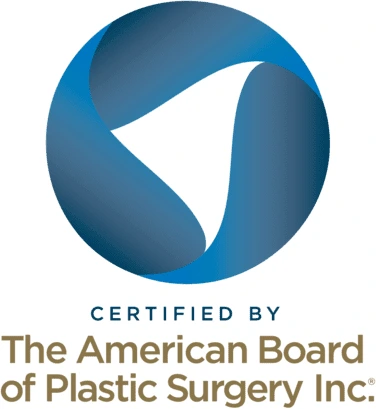Microdosing Estrogen
Written by Giovanna D’Ambrosio. Medically reviewed by Paul Gonzales on February 16, 2024.
Microdosing hormone replacement therapy (HRT) involves taking lower doses of medications to produce slower, more subtle changes. Estrogen (used synonymously with “estradiol,” which is one of three forms of estrogen found in the human body) is a feminizing hormone that many trans women, transfeminine, non-binary, and gender expansive people take to reduce gender dysphoria or discomfort. Estradiol is usually accompanied by anti-androgens (often referred to as hormone blockers or testosterone blockers), but a regimen and dose should be guided by your specific transitioning goals. Microdosing can involve taking either or both of these medications at low doses.
While microdosing usually refers to testosterone and masculine folks, the Gender Confirmation Center works with feminine-spectrum non-binary patients who seek feminizing HRT. Learn more about how to access estrogen here.
Please note that this page is for informational purposes only and should not be taken as medical advice. It is very important to see an experienced physician who specializes in HRT before taking hormones. The Gender Confirmation Center performs gender affirming surgery and does not prescribe hormones to patients. Starting hormones or adjusting your hormone dose or regimen without a discussion with a hormone specialist has the potential to be dangerous or life threatening. You should seek out a medical provider experienced in hormone treatment if you are considering going on hormones or adjusting your dosage.
Why Microdose?
Microdosing estradiol and/or anti-androgens can be an effective way to achieve more subtle feminization for feminine-spectrum non-binary people, or for any trans person with similar hormone therapy goals. It is always a best practice to choose the correct hormone dose for you with a doctor.
Similar to testosterone, estradiol and/or anti-androgens impact secondary sex characteristics, which are the changes to the body that happen during puberty in adolescence. UCSF’s guide to feminizing hormone therapy has an in-depth list of the changes that one can expect during feminizing HRT and information relating to the health concerns of estradiol and hormone blockers. Specifically, microdosing HRT is often sought out as a treatment option for the following reasons:
- Initial low dose: In general, hormone therapy begins with a low dose and is gradually increased depending on the patient’s response to hormones or desired changes.
- Easing into physical changes: Some patients will begin with microdosing to ease into physical changes and see how they feel. These changes in secondary sex characteristics often, but do not always, involve the development of mammary tissue, a lessening of body hair growth, the softening of skin and the redistribution of fat to the thighs, buttocks, hips and other areas.
- Pre-existing conditions: Microdosing might be helpful for someone with pre-existing medical conditions (medical conditions that might be exacerbated by the use of estradiol). For more information on the impact of estradiol and/or anti-androgens on pre-existing medical conditions, visit UCSF’s guide to feminizing hormone therapy. In rare cases where someone’s mental health could be worsened by the use of estradiol, going on lower doses has the potential to alleviate some of these concerns. Research has shown the positive mental health benefits of starting hormones and how an open and honest conversation with physicians and mental health providers can help determine what HRT regimen and dose is right for you.
- Economic challenges: Microdosing could be a suitable option for someone facing economic challenges. When microdosing, less medications are administered per dose. This can help spread out the amount used over longer periods of time, making lower doses a more affordable option. Some insurance providers cover estradiol, anti-androgens and other trans health care options. Consult with your specific provider if you have questions about the costs of HRT and insurance coverage.
What is microdosing estrogen/T blockers?
It is important to point out that the use of anti-androgens can be an important part of hormonal feminization for feminine-spectrum trans people. Testosterone blockers are used to lower testosterone levels, enhancing the impact that estrogen can have on the body. Blockers are sometimes used just when someone is starting estrogen, and in other cases are used throughout the entirety of someone’s HRT journey.
For some non-binary people, the use of a testosterone blocker alone can achieve the right amount of feminization. For others, the use of estrogen along with a testosterone blocker is essential. Again, it is recommended to discuss your HRT goals with a doctor to help decide which method is best for you.
Below are some dosing recommendations for the different forms of estrogen used in HRT and two common anti-androgens. Recommendations are taken from UCSF Transgender Care:
Estrogen
Oral Estradiol: A “typical” dose of oral estradiol is in the 2-8 mg range per day. A microdose would be around 1mg daily. Oral estradiol is usually taken sublingually.
Transdermal Patch: Estradiol patches come in different concentration levels, and there are different recommendations for how often a patch can be changed based on the brand. A “normal” patch dose is 100 to 400 mcg per day, and a low dose estrogen patch would be around 50 mcg per day.
Estradiol Valerate: Usually injected intramuscularly, a “normal” dose of estradiol valerate would be between 20 and 40 mg every two weeks. A microdose would be injecting less than 20mg every two weeks. For weekly injections, doses can be divided in half.
Estradiol Cypionate: Also injected intramuscularly, a “typical” dose of estradiol cypionate is between 2 and 5 mg every two weeks. A low dose would be injecting less than 2 mg every two weeks. Similarly to estradiol valerate, doses can be divided in half for weekly injections.
Anti-Androgens (Testosterone Blockers)
Spironolactone: Commonly referred to as “Spiro,” this testosterone blocker is the most commonly used anti-androgen in the United States. A “normal” dose of Spiro usually falls in the 50 to 200 mg twice per day range. A microdose would be around 25-50mg per day. Spiro is taken orally and is recommended to be taken at mealtimes.
Finasteride: A maximum dose of Finasteride is around 5mg per day, and a low dose is around 1 mg per day.
Will microdosing affect my ability to undergo gender-affirming surgery?
At the Gender Confirmation Center we strive to make gender-affirming surgeries accessible to patients who have traditionally been marginalized within transgender healthcare: non-binary patients, patients with high BMIs, patients with disabilities and senior patients. We strive to make the highest quality gender-affirming surgical care available and affordable to patients who do not conform with the gender binary. Below are our guidelines and recommendations around surgical eligibility and HRT usage:
- Top surgery:
-
-
- Undergoing HRT is not a requirement for chest reconstruction, breast reduction or breast augmentation procedures.
- While not an explicit criterion, it is recommended that patients interested in breast augmentation undergo a full-dosage treatment of feminizing hormone therapy for a minimum 12 months prior to breast augmentation surgery. Doing so can help maximize breast tissue growth to obtain better surgical (aesthetic) results. That said, our surgeons are experienced in operating on patients who microdose or do not take HRT.
-
- Body contouring:
-
-
- Though hormone replacement therapy (HRT) is not a requirement for surgery, it can have a positive effect on fat redistribution and changing someone’s gluteal shape. For patients whose transition process involves HRT on regular or full doses, it is recommended to wait until hormones have taken effect for at least a year before undergoing a body contouring procedure. Still, many patients experience difficulty with reducing or increasing fat reserves around the hips, legs and buttocks with HRT, exercise and diet alone. This is why even with hormone usage, some find it necessary to undergo a body contouring procedure to feel aligned with the shape of their bodies.
-
- Facial surgery:
-
-
- HRT is not a requirement to undergo facial surgery. HRT can only alter soft tissue such as fat redistribution–most commonly, the amount of fat in the cheeks and jaw to soften the appearance of these areas. That said, the effects of HRT cannot change bone structure, which is why many patients seek out facial surgery to change the overall structure of their face. Though not a requirement, if you are considering or currently taking HRT, talk to one of our surgeons about how that might figure into your gender affirming facial surgery plan.
-
- Bottom surgery:
-
- Dr. Ley does not require patients to undergo HRT to be eligible for bottom surgery. However, some insurance plans do.
- For patients who are on HRT and would like to undergo an orchiectomy or removal of the testicles, your dosages will likely change post-op. For this reason, we recommend that you speak with your endocrinologist or hormone provider about bottom surgery. Likewise, since an orchiectomy is technically a sterilization procedure, we recommend that our patients look into their options around fertility preservation first.
If you have questions about how microdosing might affect your surgical outcomes, you can schedule a free, virtual consultation with one of our surgeons today.
In the video below, Dr. Facque (he/him) explains how HRT can effect your breast augmentation results:
Personal accounts of non-binary transitioning
Below are some stories that highlight the process of medically transitioning as a non-binary person. People discuss taking low doses of estrogen, talking with doctors about non-binary identity, and what others can expect when starting their own transitioning journey.
- In this Them exposé and NBC news story, non-binary folks discuss their reasons for choosing to microdose. While most of these stories are about people taking low doses of testosterone, there are a couple of accounts about estrogen.
- In this piece, Them.us asks non-binary people to discuss their medical transition, cost barriers to hormone therapy, doctors appointments, and non-binary visibility in the trans community.
- Teen Vogue gives a platform to non-binary folks who have chosen to medically transition in this piece. Folks talk about transitioning, intermittent use of hormones, and the difference between gender identity and gender expression.
In summary
- The information on this page is not meant to be medical advice. This page is intended for informational purposes only.
- Taking low doses of estrogen and/or testosterone blockers is an option that can work for many groups of people, regardless of gender identity. Visit UCSF’s guide to feminizing hormone therapy and talk to your doctor and mental health providers to find a dose and system that works for you.
- There are many different ways to microdose estrogen and/or anti-androgens. It is normal to try out some options before landing on a regimen that feels best for you.
- The standards of care put out by the World Provider Association for Transgender Health (WPATH) suggests that doctors start by prescribing lower doses of estrogen to all trans patients seeking feminizing HRT. Look through this guide to learn more about how to talk to your doctor about microdosing.
Click Here to Request the Next Steps to Schedule a Consult!
We offer complimentary virtual and in-person consultations with our board-certified surgeons. Click here to complete our consultation request form to learn more about the next steps in your patient journey.
BOOK CONSULTATION




